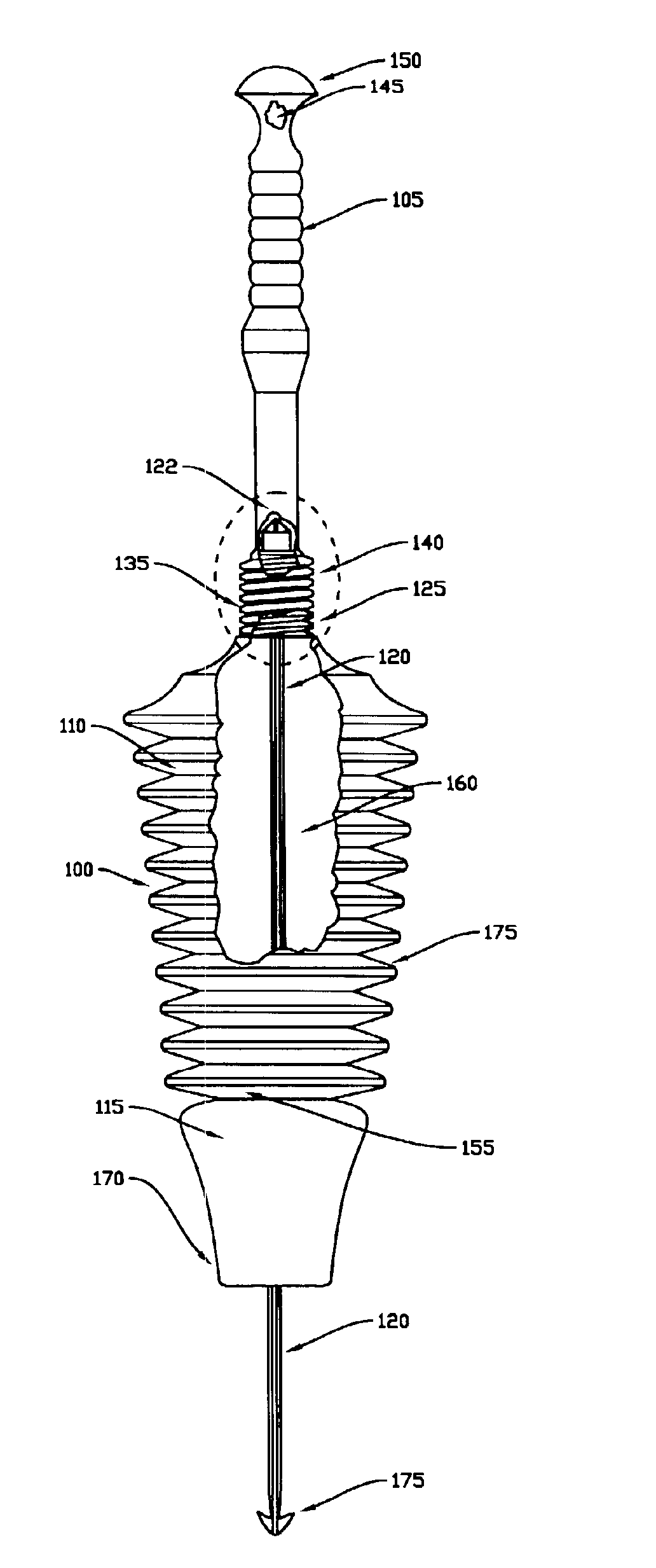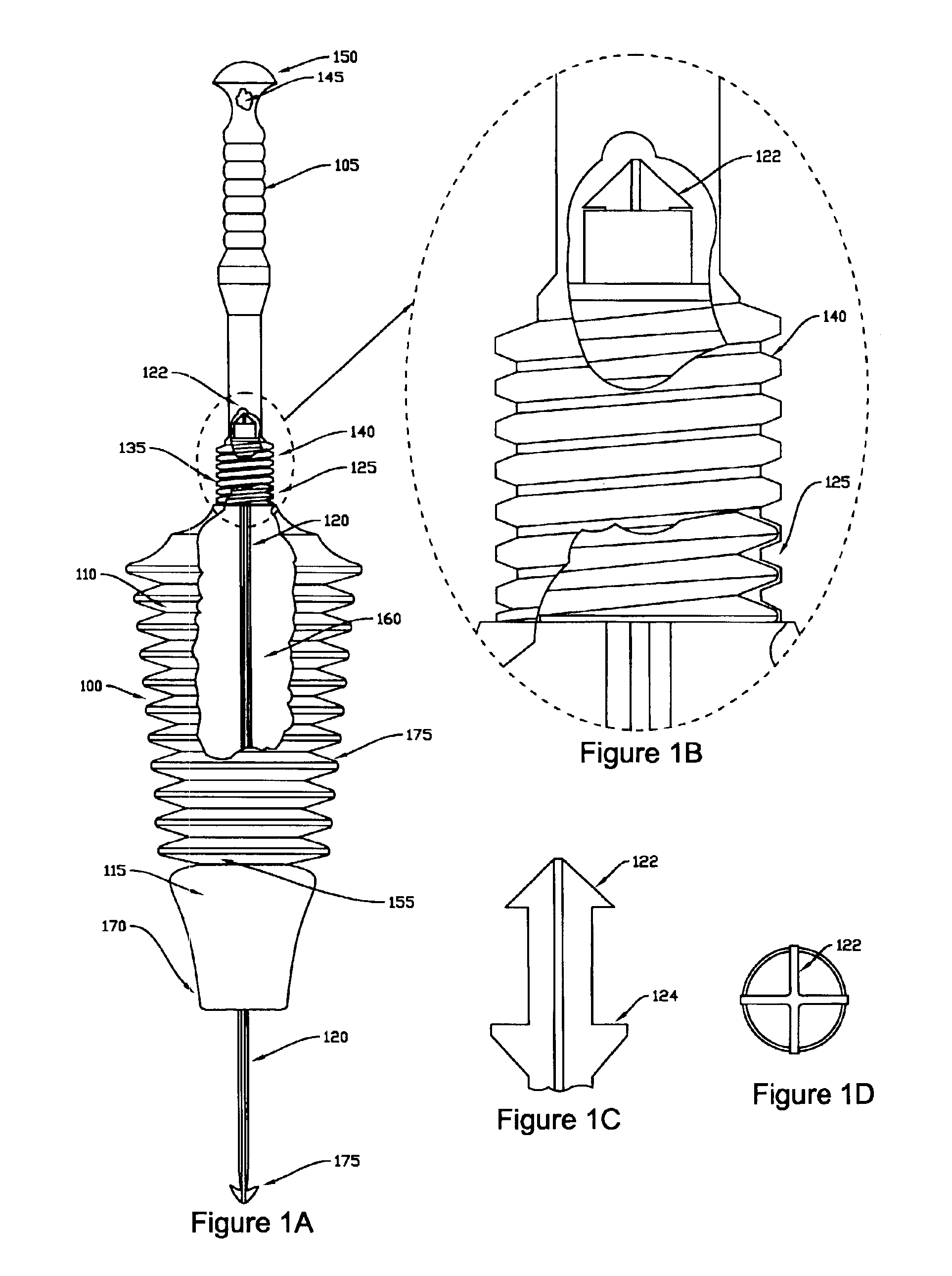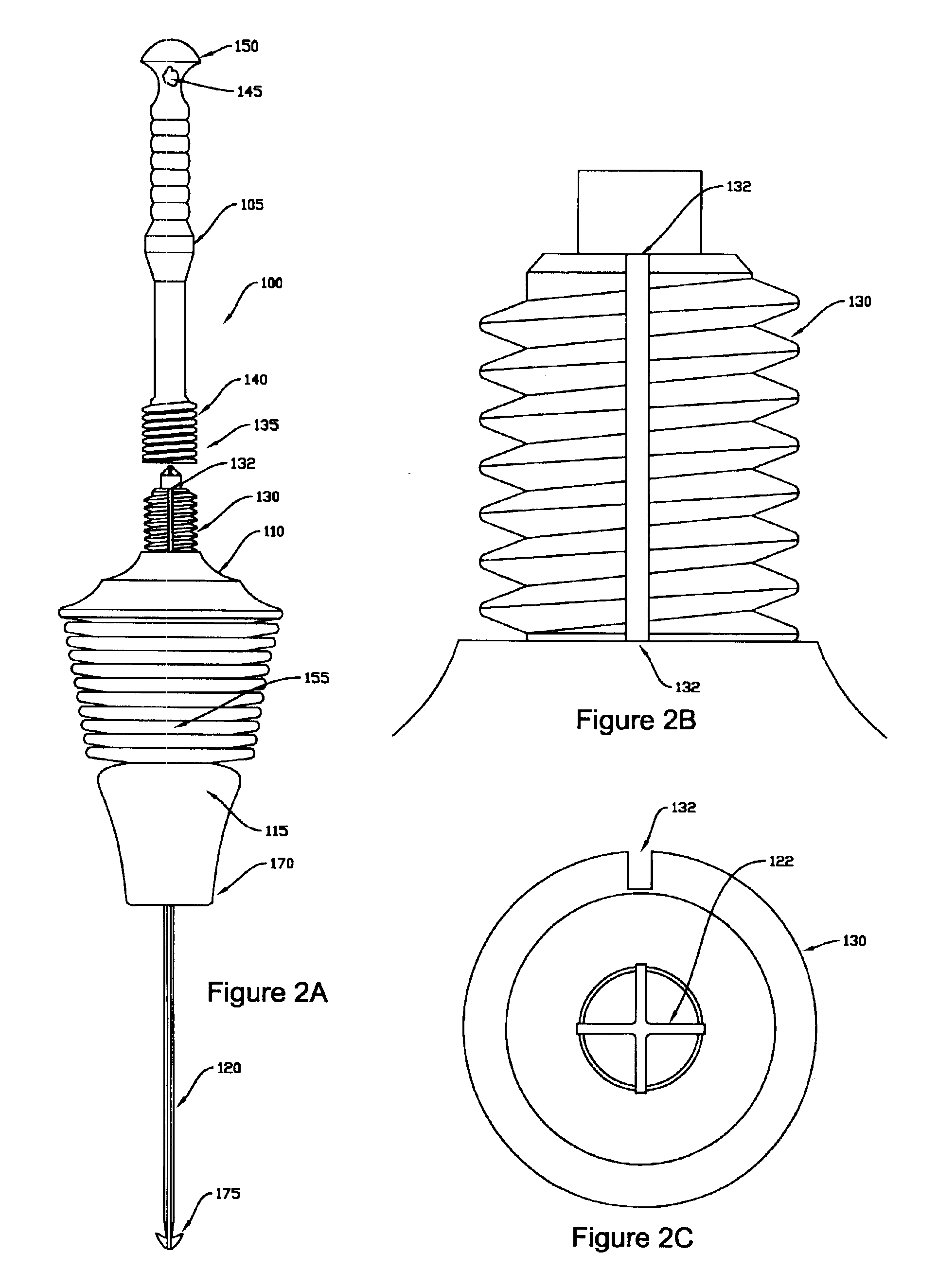[0010]A “snake plunger” according to present invention satisfies all of the foregoing needs. The snake plunger is adapted for use with a variety of sizes and shapes of drain openings such as are common in toilets, sinks, tubs, etc. The design of the plunger embodied in the present invention is such that the problems of drain blockage, slippage, splashing,
spillage, splash back, and spillover are lessened or eliminated. Furthermore, the plunger can be easily and inexpensively molded, preferably of durable rubber or plastic. The plunger is also lightweight and easy to use.
[0011]In general, a plunger according to present invention consists of an elongated handle attached to the upper end of an elongated “head” section, a seal section which is attached to the lower end of the head section, and a flexible internal “snake” which extends through the interior of the head, and is attached to the interior of the top of the head section. In alternate embodiments, the handle is either permanently or releasable attached to the head section. In one embodiment, the head section of the plunger is a pleated bellows which is generally conical and of decreasing
diameter from top to bottom. Further, because the head section decreases in
diameter towards the bottom of the head, displacement of wastewater from within the basin is minimized.
[0012]In operation, the snake plunger is placed into position above a clogged drain. Next, as pressure is applied downward on the handle, the bellows forming the head section compresses, and the portion of the seal in contact with the drain opening forms a mechanical and / or a pressure / suction seal with the drain opening, depending upon the size of the drain opening. Consequently, the pressure generated by compression of the bellows is directed through the sealing structures and into the drain in the direction of the obstruction. Further, at the same time, the snake extends through the seal section and into the drain during compression of the bellows. Next, as the handle is then pulled upwards, a
suction force is applied to the obstruction in the drain. These reciprocating forces, in conjunction with the movement of the snake into and out of the drain effectively and rapidly dislodges obstructions from within the drain, thereby facilitating rapid clearing of the drain.
[0013]In an alternate embodiment, the handle and head section are jointly configured to release air from within the head section by loosening the handle slightly when inserting the head of the plunger into a basin filled with wastewater. This release of air from the head serves to simultaneously allow wastewater into the head so as to avoid the problem of spillover. Tightening the handle then serves to prevent the flow of air from within the head. In a related embodiment, a one-way bleed valve or the like is included in either the head or handle for releasing air from within the bellows for minimizing displacement of wastewater when inserting the head of the plunger into a basin filled with wastewater.
[0014]The bottom end of the plunger consists of a seal section that depends from the bottom of the bellows. A seal located at the bottom of the seal section is designed to either seat securely within a typical drain opening, or alternately, in the case where the drain opening is smaller in
diameter than the seal, to form a pressure seal around the smaller drain opening. This seal is capable of forming either or both a mechanical and pressure seal with the drain hole being cleared by the plunger, depending upon the diameter of the drain opening. The seal improves the pressure and suction forces applied by the plunger while serving to limit or prevent the lateral slippage that is responsible for splashing and / or splash back of wastewater from within the basin. Further, a flat bottom end of the seal section allows the plunger to form a pressure seal with the surface surrounding a smaller drain opening. In addition, alternate seal designs and shapes are used in various embodiments to adapt the snake plunger to better interface with various sizes, shapes, and styles of drain openings.
[0016]In related embodiments, compression of the bellows is used to direct
compressed air from within the bellows and into the snake. In these related embodiments, the
compressed air entering the snake is then used to extend the snake further into the drain, or alternatively, to assist in clearing blockages within the drain by venting
compressed air through the end of the snake and thus into the drain in the direction of the obstruction.
 Login to View More
Login to View More  Login to View More
Login to View More 


